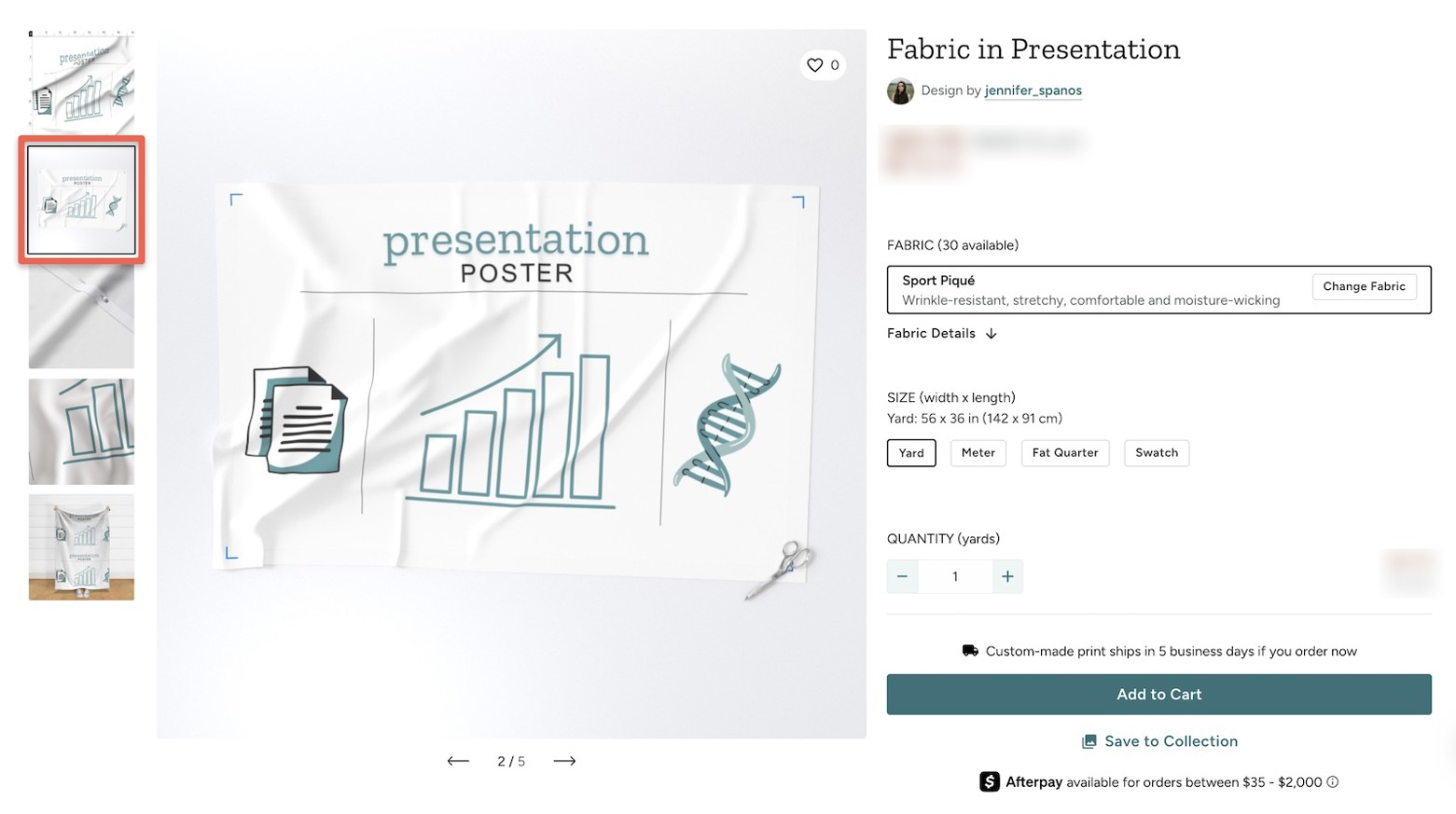Best Paper for a Conference Poster: An Expert Guide for Academics
Academic conferences are an opportunity to present your research effectively and professionally. A well-crafted poster is key to communicating your findings clearly. It also draws attention from fellow researchers, potential collaborators, and industry professionals. Choosing the right material for your poster ensures that your research is displayed with the clarity (and durability) it deserves.
This quick guide will help you explore the different printing materials available and their advantages and drawbacks. Plus, a few quick design tips to give your poster a visual boost.
If you’re attending or hosting a virtual poster session, the materials might not apply. But, the design tips and the need for a professional presentation is still key to the success of the session.
Why Choosing the Right Material Matters for Your Conference Poster
It doesn’t matter how much work you put into your research or your design. If the material you pick to print it on is shabby or easily ripped, it will change the perception of passersby. A clear and professional presentation is just as important as the content on your poster.
If you’ll be travelling far (or to multiple events), you’ll require durable, high-resolution posters that can handle the presentation tour without getting damaged (even if you invest in a solid poster tube to transport it).
Paper vs. Fabric Posters: Which One is Best?
|
Paper Poster |
Fabric Poster |
|
|
Best for |
Sharp, professional presentations |
Researchers attending multiple conferences, travel-heavy schedules |
|
Types |
Matte, Semi-Gloss, Glossy |
Polyester, Satin |
|
Pros |
High print quality, affordable, and widely available |
Lightweight, foldable, wrinkle-resistant, and easy to pack |
|
Cons |
Prone to wrinkles or tearing, requires a poster tube for transport. |
Less sharp text, higher printing costs, colours may appear less vibrant |
Paper Posters - The Classic Choice
Paper posters are ideal for academic conferences that prioritize sharp visuals and detailed graphs. Their affordability and accessibility make them a top choice for researchers presenting at local or one-time events.
Paper: Best for local conferences, single-use posters, and highly detailed presentations requiring precision.
Fabric Posters - A Portable Alternative

Reference: https://support.spoonflower.com/hc/en-us/articles/204266984-Tutorial-Creating-a-Fabric-Presentation-Poster-from-a-PDF
Fabric posters offer a travel-friendly alternative, reducing the hassle of carrying poster tubes. However, they may lack the crispness of paper posters, particularly for text-heavy designs. Tools like Spoonflower can help you design and print for different fabric types.
Fabric: Best for international conferences, fieldwork presentations, and situations where portability is a priority.
Types of Paper for Conference Posters
|
Matte |
Semi-Gloss |
Glossy |
|
|
Best for… |
Text-heavy designs and non-reflective appearance. |
Balanced designs with both text and images. |
Image-heavy designs, marketing posters. |
|
Pros |
Easy to read under varied lighting, reduces glare. |
Vibrant color, moderate glare. |
Vivid colors, high sharpness. |
|
Cons |
Colors may appear less vibrant. |
Slightly more reflective than matte. |
Glare issues, smudges easily. |
Design Tips for an Eye-Catching Conference Poster
A big part of presenting your research is designing a visual that draws the reader in and highlights the points that you want them to focus on. Here are some tips to consider when creating those designs:
- Visual Hierarchy: Guide the viewer’s eye to important information with bold headers, concise bullet points, and lots of clean white space between.
- Font: Use easy-to-read fonts like Arial, Calibri, or Helvetica. Avoid script or decorative fonts.
- High-Resolution Images: Ensure all images are at least 300 dpi for sharp print quality.
- Color Palette: Use 2-3 complementary colors to maintain a professional and cohesive design.
- Graph and Chart Optimization: Simplify visuals as much as possible, avoid visual clutter (no excessive details), and label axes clearly.
For more tips on design and printing, check out our other article that covers how to make a scientific poster.
Preparing Your Poster for Printing
Software Tools for Poster Design
All tools are not created equally. The software that you use to design your poster will impact your print options and quality down the line. So, choose one that can achieve the design you want (within the set of skills that you have:
- Adobe Photoshop & Illustrator: Best for detailed designs and large-format printing.
- Microsoft PowerPoint: User-friendly and widely available for basic poster designs.
- Canva: Easy-to-use online tool with customizable templates.
When preparing for printing, consider the following preferred file formats: Save posters as PDF or TIFF with proper bleed and crop marks.
DIY Printing vs. Professional Printing
If your poster is quite small and you plan on doing your own printing, be sure to use a high-quality inkjet printer and paper. Test print on a small scale before spending the money to print anything larger.
If you plan on using a professional printer, it’s still important to test print and catch errors before the final copy. Ensure that the printer provides high-quality materials and check their timelines to ensure you give them enough time to print your poster before you need it.
Mistakes to Avoid When Printing A Conference Poster
- Low-Resolution Images: Ensure images and logos are at least 300 dpi to avoid pixelation.
- Overloading with Text and Data: Keep text concise using bullet points and short paragraphs. Avoid large text blocks.
- Incorrect Poster Size: Check conference guidelines for poster size (e.g., 36”x48”).
- Poor Color Contrast: Ensure text contrasts well with the background for readability. Avoid using harsh neon palettes that are tough on the eyes.
- Ignoring Margins and Bleed: Keep content at least 1 inch from the edges to prevent clipping.
Final Thoughts: Choosing Your Conference Poster Material
Choosing the right material for your conference poster is crucial for an effective presentation. Paper posters offer high-quality visuals and affordability but require careful transport. Fabric posters are travel-friendly but may compromise text clarity.
Experiment with test prints to determine the best material for your research to be displayed on. A well-prepared poster enhances your academic presentation and ensures you make a lasting impression.
With the right material and preparation, your conference poster will be an effective tool for sharing your research and engaging with your academic community.
Best Conference Poster Paper - FAQ
Standard poster paper is a heavyweight material, typically closer to 180-200 gsm, designed for high-resolution printing.
Poster paper is optimized for large-format printing, while photo paper is designed for smaller, high-gloss prints with enhanced color saturation.
Semi-gloss paper offers the best balance between color vibrancy and readability, making it ideal for conference posters.
A resolution of 300 dpi ensures sharp text and images.
Matte is best for text-heavy posters, while glossy is ideal for image-heavy designs.
Check the conference or poster session guidelines. They’ll usually have a required range or poster size recommendation for the event.
Similar to above, printing images at 300 dpi helps to ensure sharp visuals.
While DIY printing is possible, professional services provide better quality and durability.
Opt for matte or semi-gloss paper to reduce reflections.
Costs range from $30-200CAD, depending on size, paper type, and printing service.
Most professional services take 24-48 hours. However, it doesn’t hurt to budget for a bit more time in case something goes wrong.
Yes, but it adds weight and may cause glare issues.


